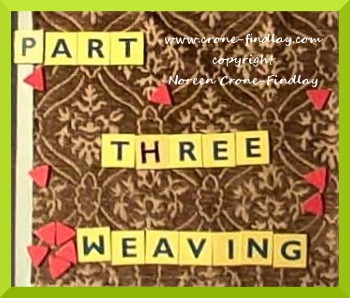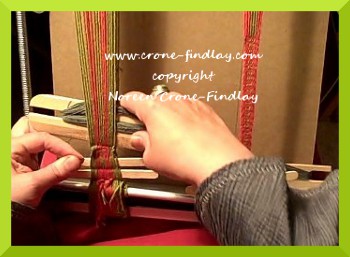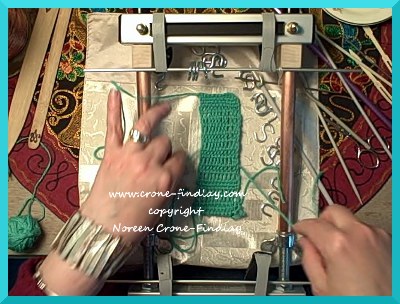A dear friend asked me: "Why are you spending all this time figuring out how to weave inkle bands on the Mirrix loom? You have inkle looms! "
Yes, I do... an open sided one, a closed side one that my husband built me from upcycled pallet wood, and a mini.
And, I love them.... but, I find that the open side and mini inkle looms both kind of flop when I have one end on the desk edge and one end in my lap. This is the way that I like to weave with inkle looms, and I find the wobble/flop rather frustrating.
I really like how stable the Mirrix is when I have the lower edge in my lap and the upper edge against a workbench, table or desk.
Also, I love the precision of the tensioning on the Mirrix... those thumbscrews are sweet!
And, I also love the shedding device.......... soooooooooo smooth. :D
Besides, the Mirrix takes up sooooooooooooo little room to store it- inkle looms do take up a chunk of space in the studio!
That's four good reasons that have made this rather challenging learning curve worthy of the time I have invested.
Here's the video for the finishing process of weaving inkle bands on the Mirrix loom:
When you have woven your bands to the point that the warping rod is sitting on top of the loom, you will need to remove the spring:
Loosen the tension up a lot....
Lift the spring rod out of the spring.
Release the ends of the springs from the knobs.
Gently, ease the spring out of the warp strands by spreading the warp strands out slightly and pushing on the spring to disengage it.
Continue weaving until the shuttle almost can't make it through the shed.
Weave one row.
Keep the shuttle in the shed, and place a darning or tapestry needle in the shed with the point pointing in the direction that the shuttle exits the shed.
Weave the next row, and repeat with a second darning needle.
The needles now point in opposite directions.
Weave one more row.
Cut the weft strand, and thread it into the first needle.
Pull it through, and remove the needle.
Thread the weft strand into the remaining needle and pull it through.
La de dah! you have finished your inkle band!
Wheee! :D
I always weave the tail end in a little bit more before I trim it off.
Loosen the tension wayyyyyyyyyyyyyyyyyy off, and slide the warping rod out of the loops.
Trim the ends, and pull them through the heddles.
Congratulations, you've woven some scrumptious new inkle bands! :)
Happy Weaving!
~Noreen




















































